Terrarium lizards come in all shapes, sizes, colors and temperaments.
Some make an excellent choice for beginners looking to step up from a simple planted terrarium, whereas others are definitely for the more experienced keeper.
For this article, I have scoured the content of YouTube’s leading herpetologists and keepers (links at the end – go check them out) to distill the various terrarium lizard options down to a digestible list.
The good, the bad, and the definitely don’t get this lizard…
Read on to find out which is right for you and which to avoid!
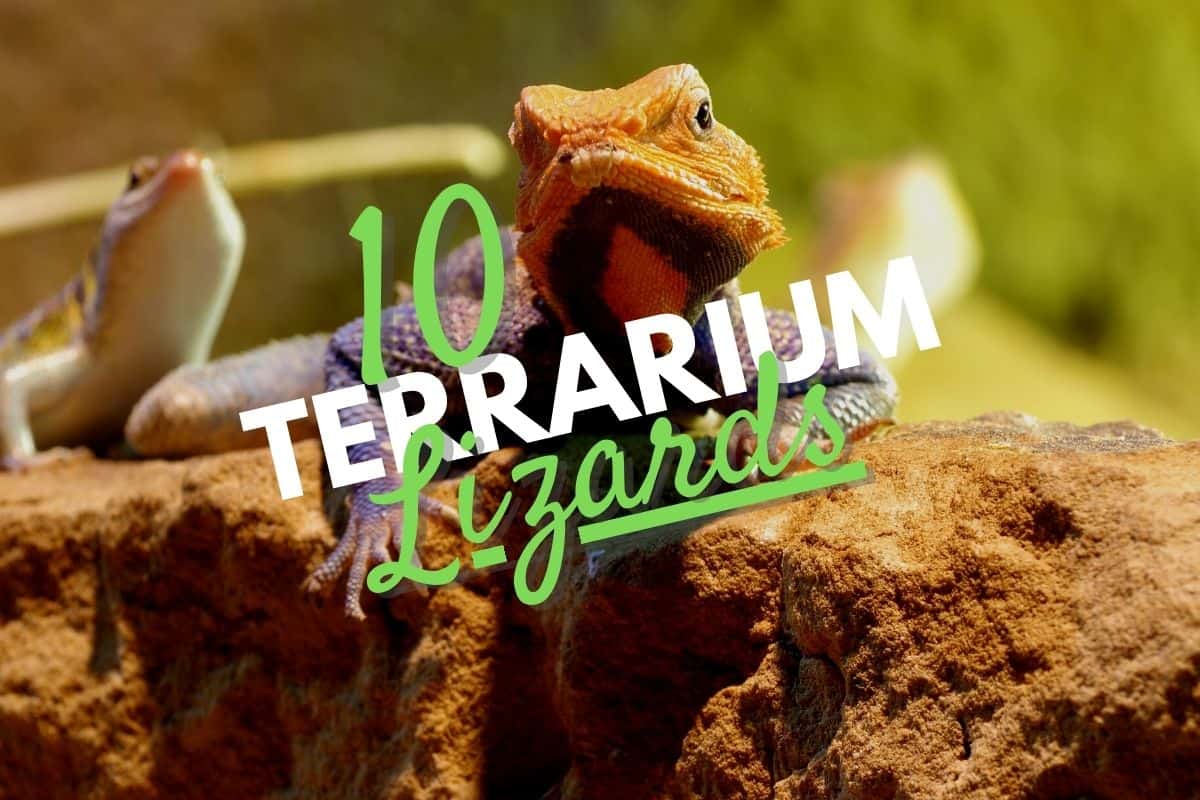
Terrarium Tribe is reader-supported. When you purchase through links on our site, we may earn an affiliate commission (at no further cost to you). 💜
Can Lizards Live in a Terrarium?
Lizards can come from all manner of different climates and can need a wide range of environmental conditions, but terrariums are a flexible tool and they can accommodate many types of species.
When we’re talking about a lizard terrarium, we can mean many things.
The simplest may be a typical bioactive terrarium setup that needs no real specific additions (e.g., for mourning geckos), whereas some lizard species will require a complex setup with dedicated care equipment (e.g., basking lamps, UV light).
In other cases, size can be the most prohibitive factor. Some of these lizards get seriously big, so be sure to read up on what you’re getting first.
Whether you have a large reptile terrarium that can accommodate the big boys, a tall reptile terrarium for the more arboreal species (climbing), or just a small tropical habitat – there’s something here for you.
Just make sure to get reptile safe plants too.
All that said, many of the lizards on this list are accessible for beginner keepers and terrarium(ers) alike.
Let’s see them!
Terrarium Lizard Species
1 | Gecko
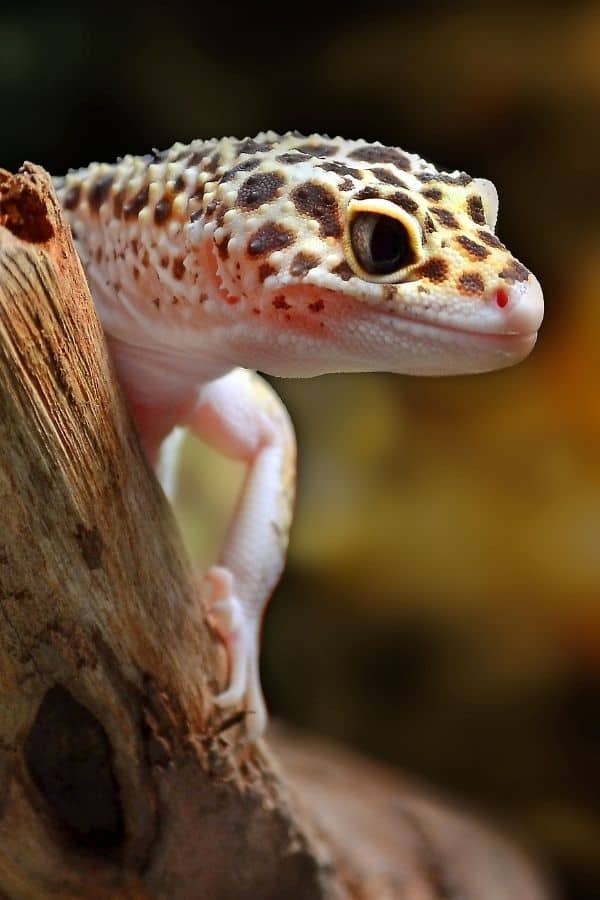
Perfect for smaller terrariums, the gecko family offers a wide variety of small – to truly tiny – lizard species.
Crested geckos are a popular choice for their ease of care, availability, and range of vibrant patterns. Or, check out leopard geckos for another great beginner species (I mean, just look at their little spots!).
When it comes to geckos, they’re all generally pretty docile and easy to handle. Though, they can lose their tails if they get too stressed! So be gentle with them.
Environmental requirements will differ from species to species. With some needing tropical conditions and plenty of stuff to climb, versus the more terrestrial arid varieties.
As always, do your research before bringing a new critter into your home.
2 | Bearded Dragon
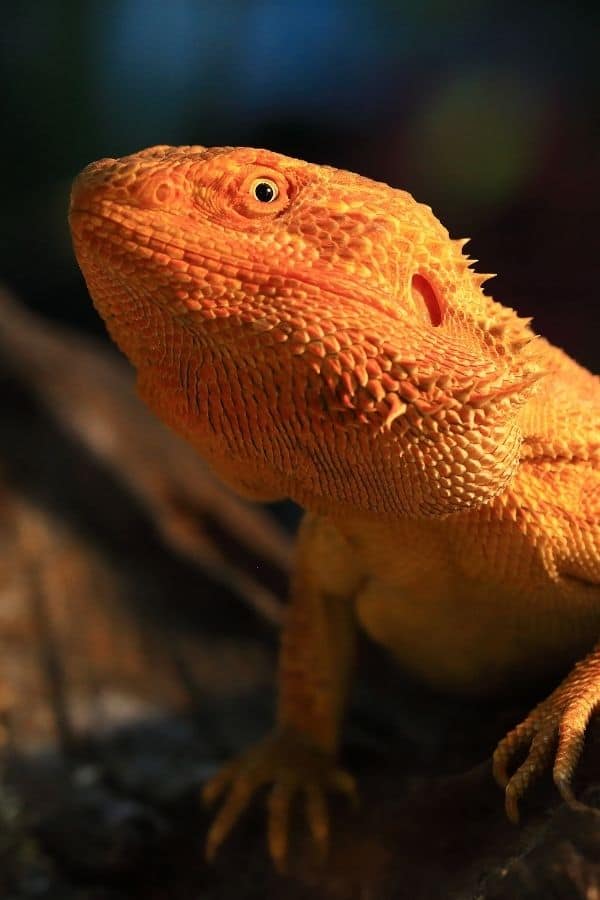
Despite the ferocious name, bearded dragons are a great first terrarium lizard.
They’re super chill and more than happy to hang out on your shoulder all day – just as they would sun themselves up on a rock or branch. They’re arguably the easiest to handle of all the terrarium lizards.
Of course, they’re a bit on the larger side and will need a dedicated reptile enclosure with plenty of space and some technical additions (e.g., UVB bulbs and basking lamps).
Overall, a great choice for keepers looking for more of a pet lizard that they can really be involved with.
3 | Anole
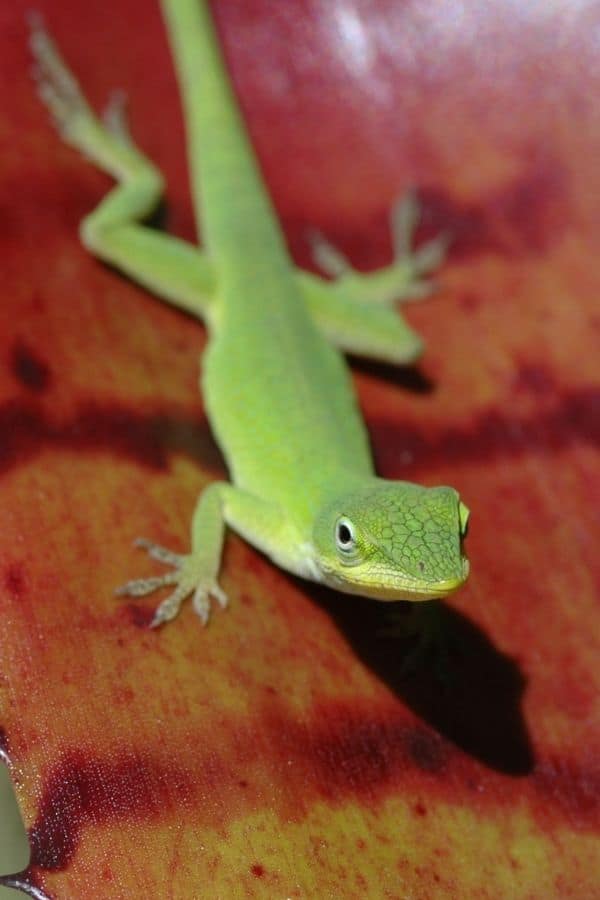
Anole lizards (pronounced [ah-no-lee]) are a super common choice for a terrarium lizard – and for good reason.
These are widely available and very affordable. In many ways, they’re like a smaller, easier, and more accessible alternative to a chameleon.
Though they come in a range of vibrant greens and earthy browns, they can actually change color a little! Not to mention the (comparatively) enormous red flap that they can bulge out beneath their chins.
They’re a real feast for the eyes, and speaking of eyes – theirs can move independently, too, just like a chameleon.
Perfect for a tropical bioactive enclosure with plenty of lush terrarium plants, just make sure it has plenty of space to roam and branches to climb.
4 | Blue-Tongued Skink
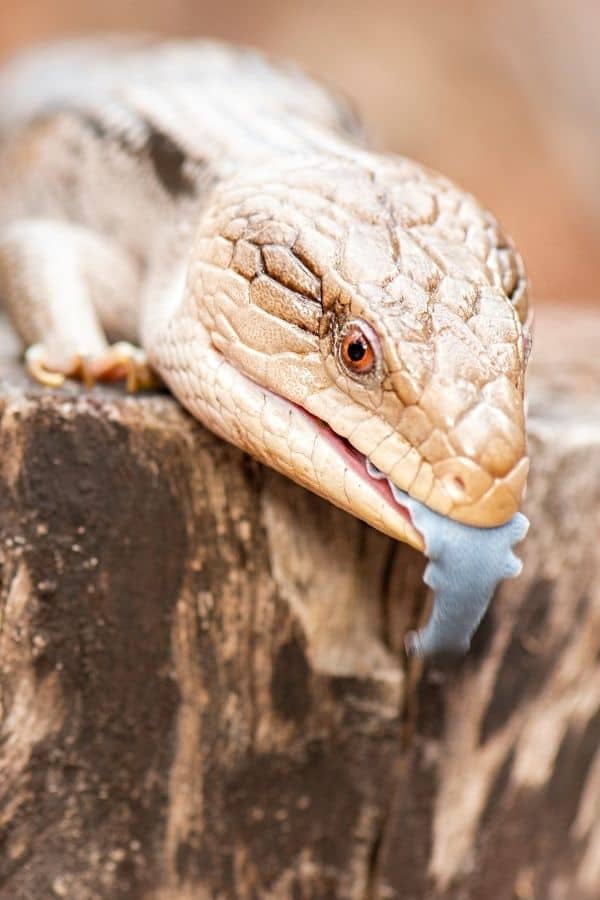
Much like the bearded dragon, blue-tongued skinks are super chill and usually happy to hang out with you.
Though, unlike the bearded dragon, blue-tongued skinks are much more straightforward to care for. They have pretty unfussy dietary needs and a more forgiving temperature range (though their care does vary a lot depending on the species, please research appropriately).
They’re almost like a snake with their long bodies and tiny legs, but that’s to be expected from these ground-dwelling animals.
And, of course, we can’t forget that amazing blue tongue!
5 | Uromastyx
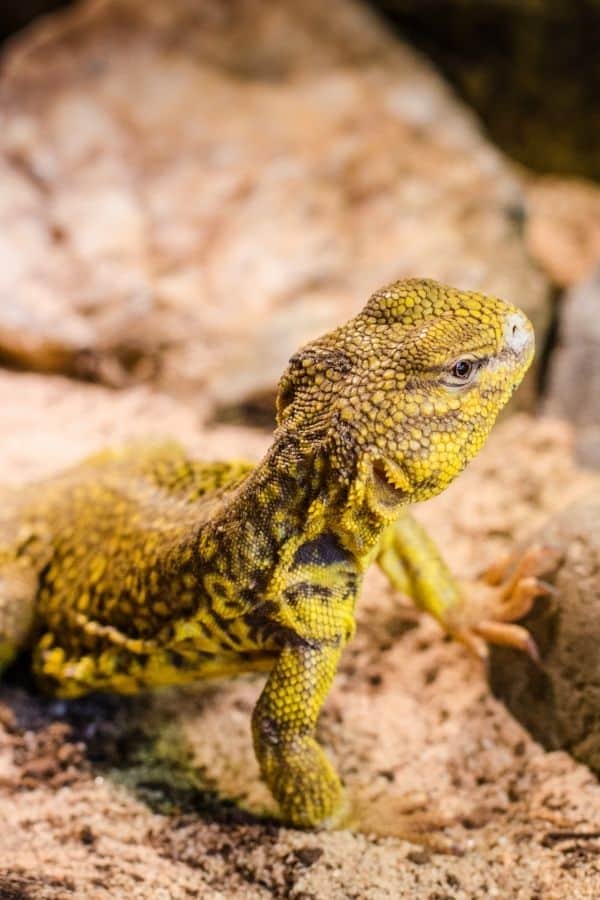
To me, uromastyx look like little earth dragons! Their vibrant, warm colors of yellow, red, and orange are contrasted wonderfully with black and brown tones.
Which makes sense that they’re from the same family as the bearded dragon. Uromastyx lizards tend to be on the smaller side (though not all of them), and they’re also similar in temperament to the bearded dragon, but they can take a while before they get comfortable with you.
Seemingly a great medium-sized alternative.
However, they also have more particular care requirements. Being native to more mountainous and desert environments, they like it hot and bright.
So not suited to your typical tropical terrarium. You’ll need a larger arid terrarium setup instead.
6 | Chinese Water Dragon
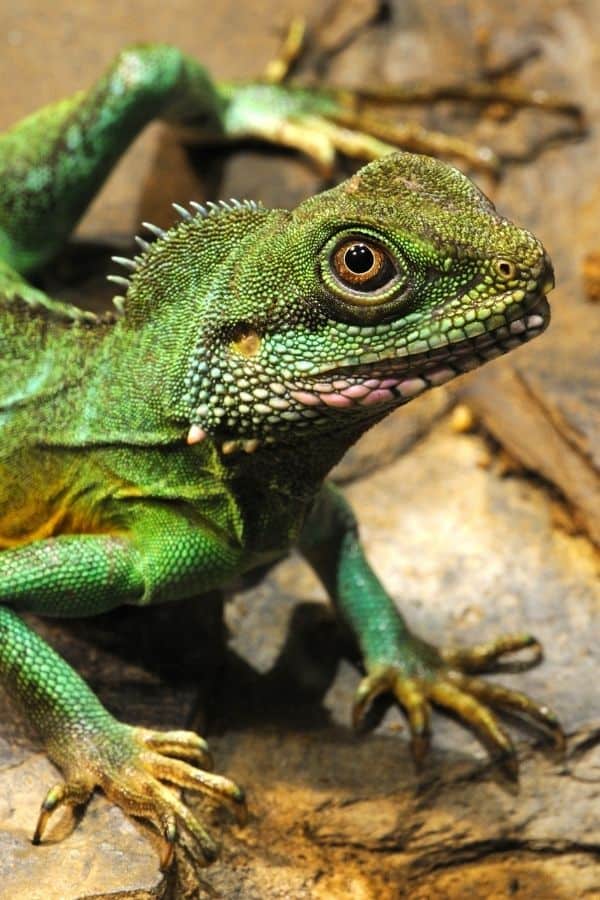
A similar looking – and overall much better – alternative to the iguana (more on why later), Chinese water dragons are stunning little creatures.
They’re pretty common and readily available, but they’re also quite a handful.
Being semi-arboreal, they like to climb and roam a lot… but they also like to swim. So, from a setup point of view, keeping them happy can be tricky.
You’ll need a large (and tall) enclosure and some additional tech to meet their ideal care conditions.
Not for beginners or those on a budget, unfortunately.
7 | Chameleon
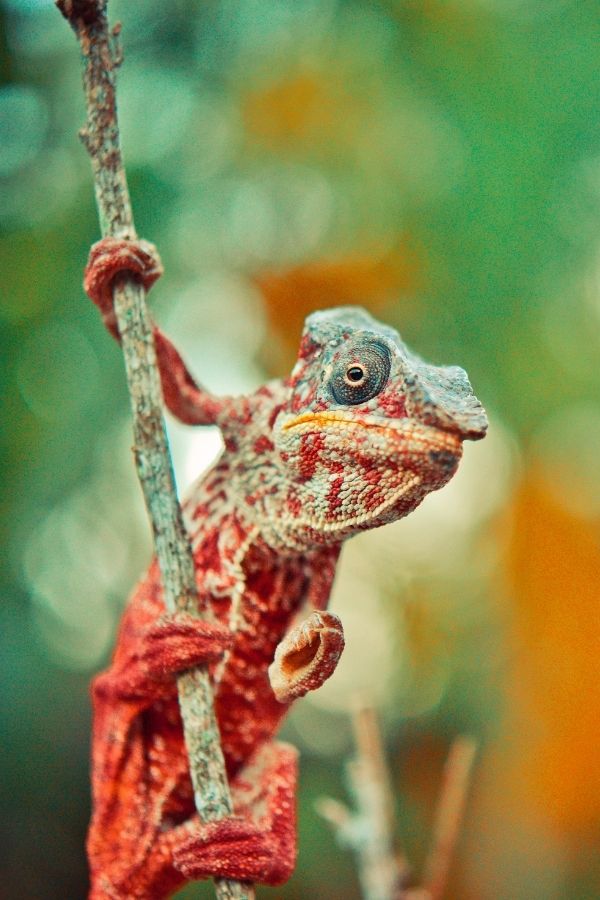
Chameleons are a fascinating breed.
They’re able to change color, see in multiple directions (and in multiple light spectrums), and even shoot their tongue at their prey. Maybe the coolest animal on the planet?
Which all sounds great, but unfortunately, they are a challenging species to keep.
For starters, they’re going to need a screen-based container – for extra ventilation and no reflections – and a variety of extra apparatus like a drip feeder. Which rules out many of our typical planted terrarium setups.
Plus, they need a varied diet and specialized environmental conditions.
Panther chameleons are typically regarded as the easiest species to keep, but they’re still recommended only for experienced keepers.
8 | Agama
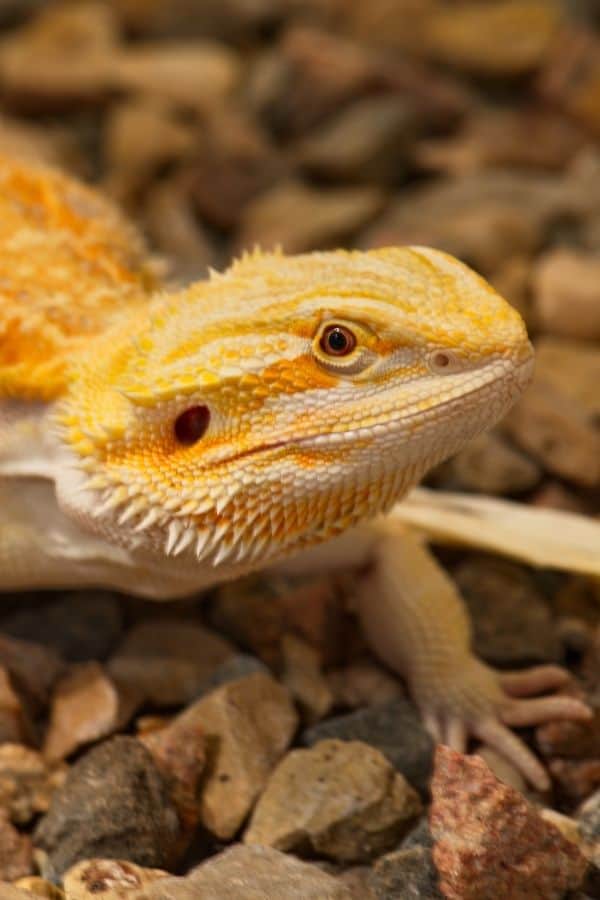
Looking for another miniature bearded dragon alternative?
Agama lizards could be for you. They are very similar to the bearded dragon, with all the same benefits – just in a smaller package.
Which also means they eat (and poop) a lot less. No complaints here!
They’re another species that needs an arid terrarium setup. Though they do need a reasonably sized space to roam, they’re not particularly large animals, and they don’t need much in the way of tank features.
9 | Monitor
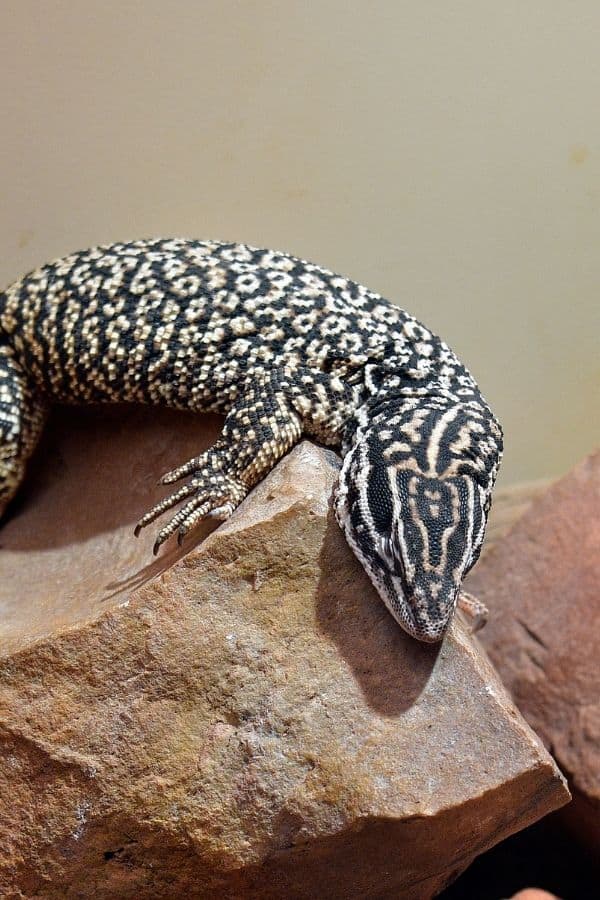
Monitor lizards are intelligent, active, and really engaging to feed and handle, but it’s critical that you know which species of monitor lizard you’re getting
Because their sizes range… a lot.
The Ackie monitor is more like a gecko size, and it’s a wonderful pet. With a spiny tail and scaly hide, they look like miniature dinosaurs!
On the other hand, the Savannah monitor is an absolute beast, more akin to a real dinosaur. Plus, they’re a challenging species to keep and not recommended on the whole.
Naturally, as relatives of the Komodo dragon, monitor lizards do have a bite to them (even the little ones), so bear that in mind.
10 | Tegu
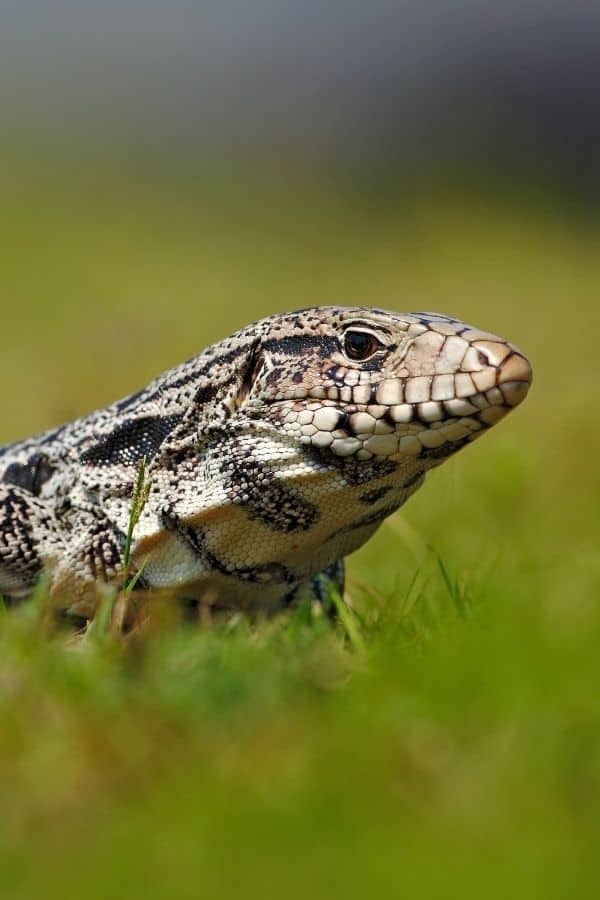
The Argentine Tegu is a titan amongst lizards.
These black and white gentle giants are not for the faint-hearted. Though they’re generally docile, they are still powerful animals and need to be treated as such.
Naturally, these colossal lizards need an equally colossal terrarium. Like seriously, you will definitely need a custom reptile tank for this one.
If you have half a room to dedicate to a lizard, perhaps the Argentine Tegu is for you!
Bonus | Iguana
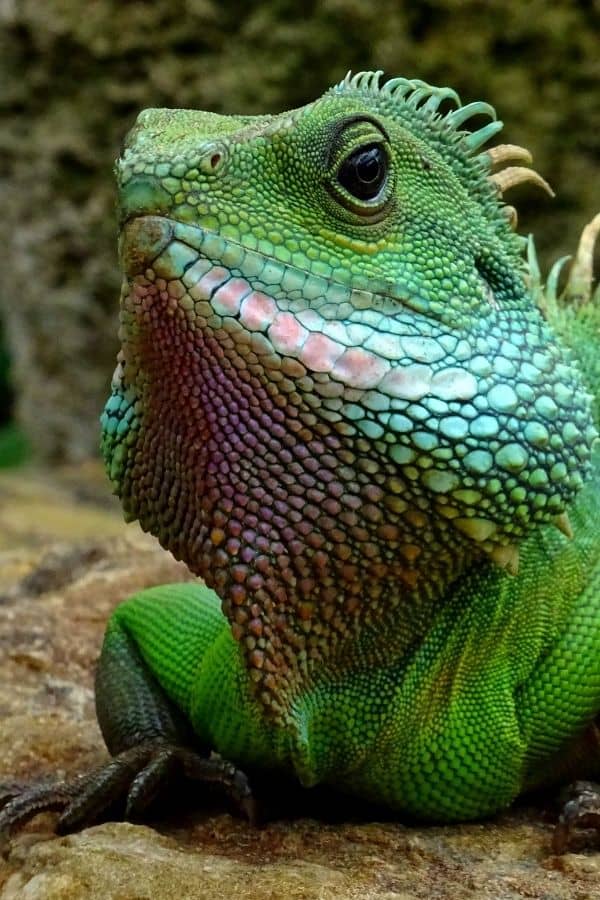
Growing up, I thought iguanas were popular pets, but after watching this video by Clint’s Reptiles, I’m starting to think I was wrong…
It turns out that iguanas, on the whole, are nasty creatures. All too happy to cut and bite you, and they’re pretty good at it!
Apparently, it’s an all-around bad choice for terrariums. Who knew?
Over to You
So, this has been quite the reptile run down.
Which of these terrarium lizards has caught your eye? Let me know in the comments!
Next up, why not check out some of the reptile feeder isopods available on our store? Some of these species can make a fantastic snack and cleanup crew for your terrarium!
